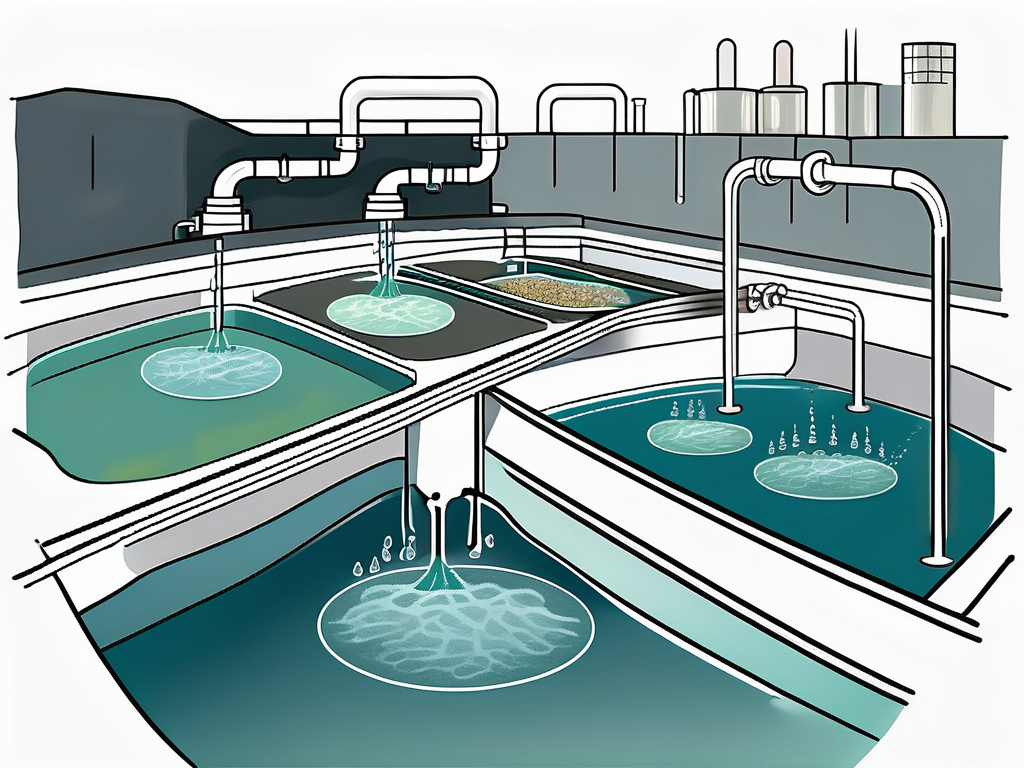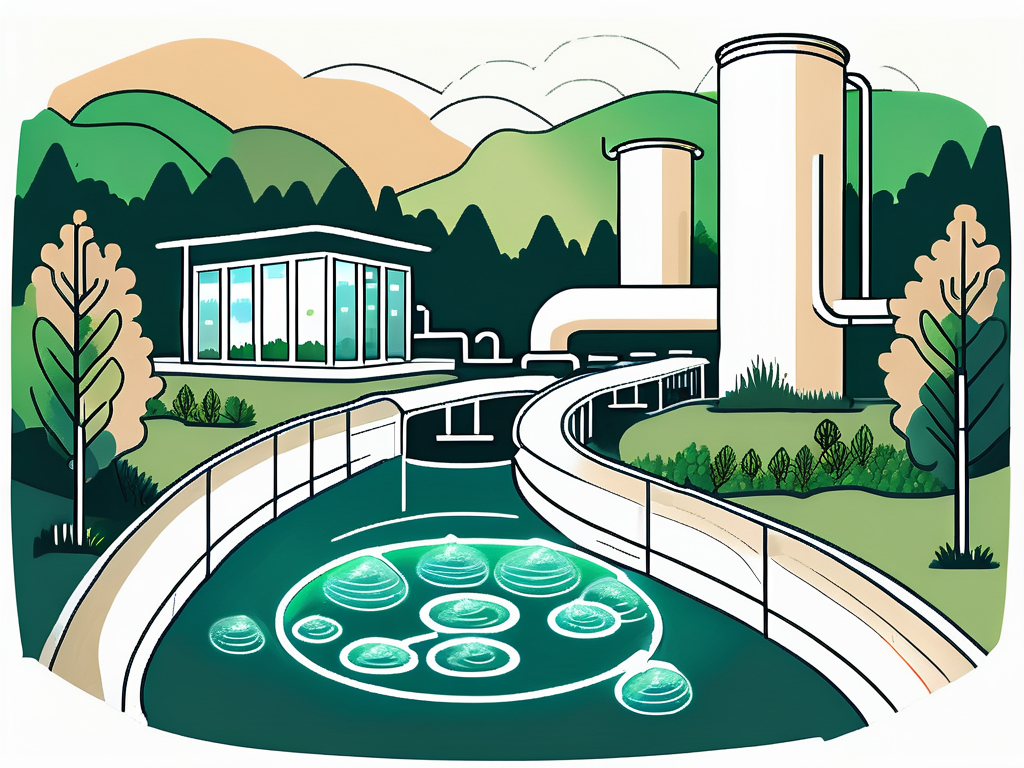
Carbon Footprint: Wastewater Treatment Explained
The term 'Carbon Footprint' refers to the total amount of greenhouse gases that are emitted into the atmosphere as a result of human activities. In the context of wastewater treatment, it pertains to the amount of carbon dioxide and other greenhouse gases that are released during the process of treating wastewater before it is discharged back into the environment.
Wastewater treatment is a complex process that involves several stages, each of which can contribute to the overall carbon footprint of the operation. This article will delve into each of these stages in detail, explaining how they contribute to the carbon footprint and what can be done to reduce it.
Understanding Wastewater Treatment
Wastewater treatment is a process that involves the removal of contaminants from wastewater to make it safe for discharge back into the environment. This process can be divided into three main stages: primary treatment, secondary treatment, and tertiary treatment.

Each of these stages involves different processes and technologies, each of which can contribute to the overall carbon footprint of the wastewater treatment operation. Understanding these processes and their impact on the environment is crucial for developing strategies to reduce the carbon footprint of wastewater treatment.
Primary Treatment
The primary treatment stage involves the removal of large and heavy particles from the wastewater. This is typically achieved through a process of sedimentation, where the wastewater is allowed to settle in large tanks, allowing the heavy particles to sink to the bottom.
While this stage does not typically contribute significantly to the carbon footprint, the energy used to pump the wastewater into the tanks and the subsequent disposal of the settled sludge can contribute to greenhouse gas emissions.
Secondary Treatment
The secondary treatment stage involves the removal of organic matter from the wastewater. This is typically achieved through a process of biological treatment, where microorganisms are used to break down the organic matter in the wastewater.
This stage can contribute significantly to the carbon footprint, as the biological treatment process can produce methane, a potent greenhouse gas. Additionally, the energy used to aerate the wastewater and maintain the microorganisms can also contribute to greenhouse gas emissions.
Carbon Footprint of Wastewater Treatment
The carbon footprint of wastewater treatment can be significant, depending on the specific processes and technologies used. The main sources of greenhouse gas emissions in wastewater treatment are the energy used in the treatment processes and the methane produced during the biological treatment stage.

However, there are several strategies that can be used to reduce the carbon footprint of wastewater treatment. These include energy efficiency measures, the use of renewable energy, and the capture and utilization of methane.
Energy Efficiency
Energy efficiency measures can significantly reduce the carbon footprint of wastewater treatment. This can include the use of energy-efficient pumps and motors, the optimization of treatment processes to reduce energy use, and the recovery of energy from the wastewater itself.
For example, the heat in wastewater can be recovered and used to heat buildings, reducing the need for fossil fuel-based heating. Additionally, the organic matter in wastewater can be used to produce biogas, a renewable energy source that can be used to power the treatment plant.
Methane Capture and Utilization
The methane produced during the biological treatment stage can be a significant source of greenhouse gas emissions. However, this methane can also be captured and used as a source of renewable energy.
By capturing and utilizing the methane, the carbon footprint of the wastewater treatment process can be significantly reduced. Additionally, the use of methane as a renewable energy source can also offset the use of fossil fuels, further reducing the carbon footprint.
Future Trends in Wastewater Treatment
The future of wastewater treatment is likely to see a continued focus on reducing the carbon footprint. This will involve the continued development and implementation of energy efficiency measures, the use of renewable energy, and the capture and utilization of methane.
Additionally, new technologies and processes are being developed that could further reduce the carbon footprint of wastewater treatment. These include the use of advanced biological treatment processes that produce less methane, the use of carbon capture and storage technologies, and the development of new materials and technologies for wastewater treatment.
Advanced Biological Treatment Processes
Advanced biological treatment processes are being developed that can reduce the amount of methane produced during the treatment process. These processes use specialized microorganisms that can break down organic matter without producing methane.
While these processes are still in the early stages of development, they have the potential to significantly reduce the carbon footprint of wastewater treatment. However, further research and development is needed to make these processes commercially viable.
Carbon Capture and Storage
Carbon capture and storage technologies are being developed that can capture the carbon dioxide produced during the wastewater treatment process and store it underground. This can prevent the carbon dioxide from being released into the atmosphere, reducing the carbon footprint of the treatment process.
While these technologies are still in the early stages of development, they have the potential to significantly reduce the carbon footprint of wastewater treatment. However, further research and development is needed to make these technologies commercially viable.
Conclusion
The carbon footprint of wastewater treatment can be significant, but there are several strategies and technologies that can be used to reduce it. These include energy efficiency measures, the use of renewable energy, the capture and utilization of methane, and the development of new technologies and processes.
As the world continues to grapple with the challenges of climate change, the need to reduce the carbon footprint of wastewater treatment will become increasingly important. By understanding the sources of greenhouse gas emissions in wastewater treatment and implementing strategies to reduce them, we can make a significant contribution to the fight against climate change.



